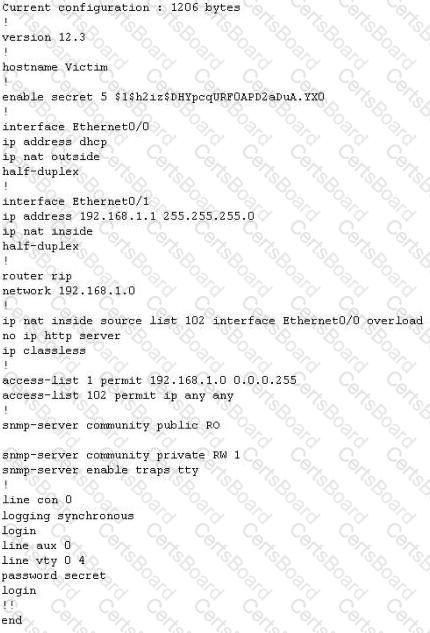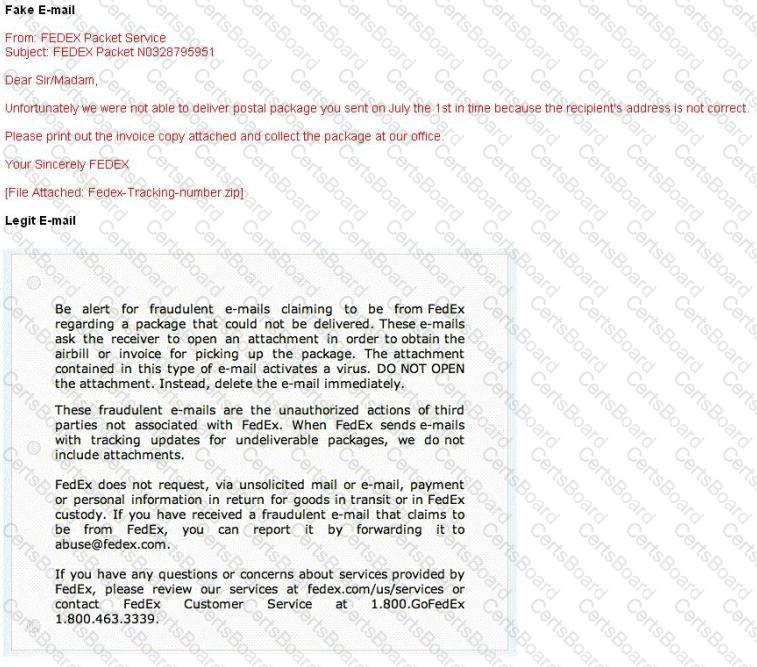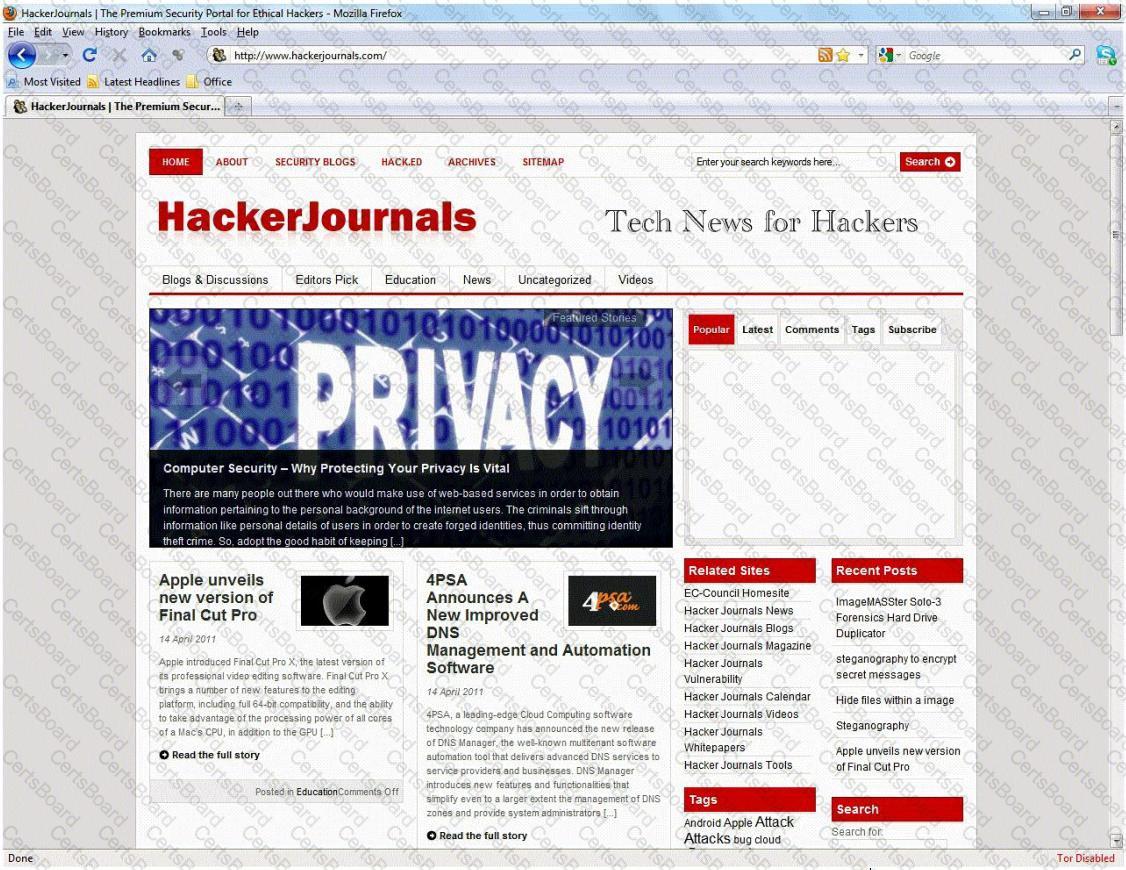The network administrator at Spears Technology, Inc has configured the default gateway Cisco router's access-list as below:

You are hired to conduct security testing on their network. You successfully brute-force the SNMP community string using a SNMP crack tool. The access-list configured at the router prevents you from establishing a successful connection. You want to retrieve the Cisco configuration from the router. How would you proceed?
A common technique for luring e-mail users into opening virus-launching attachments is to send messages that would appear to be relevant or important to many of their potential recipients. One way of accomplishing this feat is to make the virus-carrying messages appear to come from some type of business entity retailing sites, UPS, FEDEX, CITIBANK or a major provider of a common service.
Here is a fraudulent e-mail claiming to be from FedEx regarding a package that could not be delivered. This mail asks the receiver to open an attachment in order to obtain the FEDEX tracking number for picking up the package. The attachment contained in this type of e-mail activates a virus.

Vendors send e-mails like this to their customers advising them not to open any files attached with the mail, as they do not include attachments.
Fraudulent e-mail and legit e-mail that arrives in your inbox contain the fedex.com as the sender of the mail.
How do you ensure if the e-mail is authentic and sent from fedex.com?
Under what conditions does a secondary name server request a zone transfer from a primary name server?
In the context of password security, a simple dictionary attack involves loading a dictionary file (a text file full of dictionary words) into a cracking application such as L0phtCrack or John the Ripper, and running it against user accounts located by the application. The larger the word and word fragment selection, the more effective the dictionary attack is. The brute force method is the most inclusive, although slow. It usually tries every possible letter and number combination in its automated exploration.
If you would use both brute force and dictionary methods combined together to have variation of words, what would you call such an attack?
An Attacker creates a zuckerjournals.com website by copying and mirroring HACKERJOURNALS.COM site to spread the news that Hollywood actor Jason Jenkins died in a car accident. The attacker then submits his fake site for indexing in major search engines. When users search for "Jason Jenkins", attacker's fake site shows up and dupes victims by the fake news.

This is another great example that some people do not know what URL's are. Real website:
Fake website: http://www.zuckerjournals.com

The website is clearly not WWW.HACKERJOURNALS.COM. It is obvious for many, but unfortunately some people still do not know what an URL is. It's the address that you enter into the address bar at the top your browser and this is clearly not legit site, its www.zuckerjournals.com
How would you verify if a website is authentic or not?
How can you determine if an LM hash you extracted contains a password that is less than 8 characters long?
Annie has just succeeded in stealing a secure cookie via a XSS attack. She is able to replay the cookie even while the session is invalid on the server. Why do you think this is possible?


